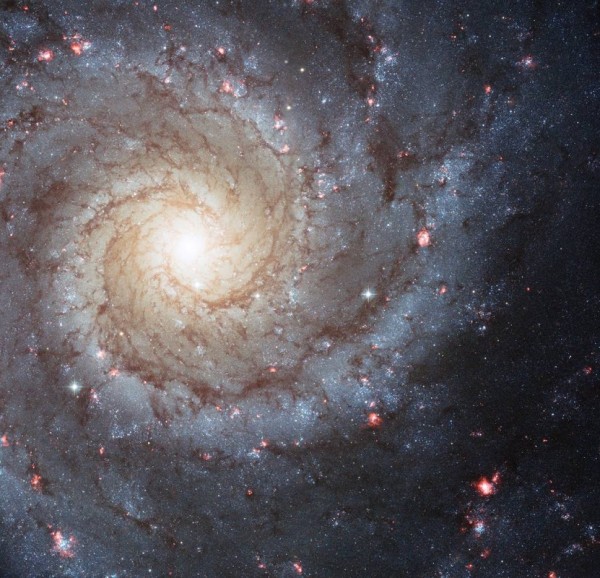By Ana Verayo, | March 18, 2017

Messier 74, also called NGC 628, is a stunning example of a grand-design spiral galaxy that is viewed by Earth observers nearly face-on. ( NASA, ESA, and the Hubble Heritage (STScI/AURA)-ESA/Hubble)
The mysterious dark matter is believed to be the invisible force that shapes galaxies and determines the movement of the universe. In a new study, scientists have debunked this theory, suggesting that the first galaxies in the universe evolved freely, without help from any invisible forces and cosmic influences.
Like Us on Facebook
In this new study, a team from the Max Planck Institute for Extraterrestrial Physics observed six galaxies that are 10 billion years old courtesy of the Very Large Telescope in Chile. Astronomers chose these galaxies since they possess the ideal star formation rate and mass to most likely evolve into a spiral galaxy such as the Milky Way.
The researchers were able to observe the spin of these galaxies and identified swirling hydrogen gas. They were also able to observe the shifting relative speeds of these galaxies. Their new findings revealed that the rotation of these galaxies decreased from the distance of its center. Similar to our solar system, most mass is concentrated in the central core. Earth rotates around the sun at 30 kilometers every second while Pluto travels at less than five kilometers.
This finding also indicates that there is a significant lack of dark matter around the studied galaxies. However, this does not suggest that there was less dark matter during the birth of the first stars and galaxies in the universe.
Scientists say that dark matter exists from a cosmic microwave radiation emitted from the Big Bang event. This also suggests that 85 percent of dark matter is invisible and shows how galaxies are shaped.
Galaxies first form within cores of dark matter, and when visible light collide with this invisible force, it accumulates into a dense core forming an accretion disc where stars and planets are formed. Since dark matter can only be detected via gravitational forces. This force can pass through all mass and cosmic material in the universe like an invisible cloud or wave.
Researchers suggest that when visible matter piles up, dark matter is still being pulled in from deep space that later forms a halo. Researchers hope that these new findings can shed more light in identifying the dominant physical processes that influence galaxy formation.
This new study was published in the journal, Nature.
-
Use of Coronavirus Pandemic Drones Raises Privacy Concerns: Drones Spread Fear, Local Officials Say

-
Coronavirus Hampers The Delivery Of Lockheed Martin F-35 Stealth Fighters For 2020

-
Instagram Speeds Up Plans to Add Account Memorialization Feature Due to COVID-19 Deaths

-
NASA: Perseverance Plans to Bring 'Mars Rock' to Earth in 2031

-
600 Dead And 3,000 In The Hospital as Iranians Believed Drinking High-Concentrations of Alcohol Can Cure The Coronavirus

-
600 Dead And 3,000 In The Hospital as Iranians Believed Drinking High-Concentrations of Alcohol Can Cure The Coronavirus

-
COVID-19: Doctors, Nurses Use Virtual Reality to Learn New Skills in Treating Coronavirus Patients







